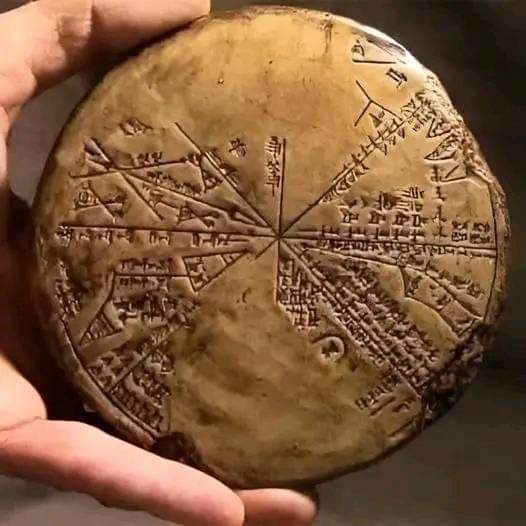The Sahel, that vast stretch of semi-arid land south of the Sahara, might not be the first place you think of when imagining the origins of ancient astronomy—but it played a surprising role in the Nile Valley’s scientific advancements. From star charts to seasonal predictions, the Sahel’s nomadic peoples shared knowledge that helped shape the astronomical innovations of ancient Kemet (Egypt).
The Know Thyself Institute points out that these exchanges were part of a broader African network, where diverse phenotypes—from the Sahel’s deep brown tones to Nubia’s onyx black—came together in a shared pursuit of knowledge (Know Thyself Institute, 2025).
Picture ancient herders gazing at the stars, passing down wisdom that would one day help build the pyramids. This article explores the Sahel’s contributions to Nile Valley astronomy, the cultural significance of this exchange, and how it can inspire modern African innovation. Let’s journey back to a time when the stars guided not just navigation, but the very rhythm of life along the Nile.
Historical Connections Between the Sahel and Nile Valley
The Sahel, spanning modern-day Senegal to Sudan, has been a crossroads of African cultures for millennia. By 3000 BCE, its nomadic peoples were already interacting with Nile Valley societies through trade routes that stretched across the Sahara. These routes, often called the “Saharan Corridor,” facilitated the exchange of goods like salt, gold, and livestock, but they also carried ideas.
Archaeological evidence, such as rock art in Chad’s Ennedi Plateau, shows early star symbols that resemble those later used in Egyptian astronomy (Le Quellec, 2011). This suggests the Sahel was a key player in the Nile Valley’s intellectual history.
The Sahel’s peoples, often depicted with deep brown complexions in Egyptian art, brought their knowledge of the stars to the Nile. As nomadic herders, they relied on celestial patterns to navigate and track seasons, a skill honed over generations.
By 2500 BCE, these star charts were influencing Nubian and Egyptian practices. For example, the alignment of early Nubian tombs at Kerma mirrors Sahelian celestial markers, indicating a shared understanding of the cosmos (Institute for the Study of Ancient Cultures, 2025).
These interactions weren’t just practical—they were cultural. The Sahel’s oral traditions, rich with stories of the stars, likely inspired Kemetic myths about celestial deities like Nut, the sky goddess. Trade also brought Sahelian peoples into direct contact with the Nile Valley, where intermarriages blended phenotypes and ideas.
The Sahel’s contribution to astronomy wasn’t a one-off—it was part of a broader African network that included the Horn of Africa and Nubia, all working together to advance knowledge. This collaboration laid the foundation for Kemet’s astronomical achievements, proving that Africa’s scientific legacy is a collective one.
Astronomical Contributions from the Sahel
The Sahel’s biggest contribution to Nile Valley astronomy was its practical knowledge of celestial patterns. Nomadic herders in the Sahel used the stars to navigate vast deserts and predict seasonal rains, a skill that was crucial for survival. By 2000 BCE, these star charts were being shared with Nile Valley societies, influencing their own astronomical practices.
The Kemites, known for their 365-day calendar, likely drew on Sahelian knowledge to refine their understanding of solar and lunar cycles (Kemet Expert, 2025). This wasn’t just about timekeeping—it was about survival, helping farmers predict the Nile’s floods.
One striking example is the alignment of the pyramids at Giza, which some scholars believe reflects celestial knowledge that originated in the Sahel. The Great Pyramid’s alignment with the North Star mirrors Sahelian navigation techniques, suggesting a direct influence (Nile Valley Collective, 2025).
The Sahel’s peoples also introduced the concept of constellations as storytelling tools, a practice that Kemites adapted into their mythology. For instance, the constellation we now call Orion was linked to Osiris, a god of rebirth, echoing Sahelian tales of renewal.
Culturally, this exchange strengthened ties between the Sahel and the Nile Valley. The deep brown phenotypes of Sahelian peoples were celebrated in Egyptian art, often depicted alongside Nubians and Egyptians in scenes of unity.
This diversity wasn’t a barrier—it was a bridge, fostering collaboration that led to some of Kemet’s greatest achievements. The Sahel’s astronomical knowledge also influenced Nubian star maps, which were later used in Meroitic temples, showing how ideas spread across the region.
This wasn’t a one-way street. The Nile Valley’s advancements, like the sundial, likely made their way back to the Sahel, creating a feedback loop of innovation. The result was a shared African scientific tradition that drew on the strengths of its diverse peoples, proving that knowledge knows no boundaries.
Modern Implications for African Innovation
The Sahel’s role in Nile Valley astronomy reminds us that Africa has always been a leader in scientific innovation. Today, as we face global challenges like climate change, this history can inspire us to tap into our collective genius.
The Sahel’s ancient star charts weren’t just about navigation—they were about resilience, a lesson we can apply to modern problems. Imagine African nations collaborating on sustainable technologies, drawing on the same spirit of innovation that built the pyramids. Platforms like afriker.com with the tag Sahel are helping share this history, encouraging us to think big.
This history also challenges stereotypes about Africa. Far from being a continent of isolation, Africa was a hub of intellectual exchange, with the Sahel playing a key role. Recognizing this can boost pride in African identity, especially for the diaspora seeking to reconnect with their roots.
The deep brown phenotypes of Sahelian peoples, celebrated in ancient art, remind us to embrace our diversity as a strength, not a divider.
Moreover, the Sahel’s contributions highlight the importance of oral traditions in preserving knowledge. Today, as we digitize history, we can learn from the Sahel’s storytelling to ensure our cultural heritage isn’t lost. Initiatives like those at the Nile Valley Collective are doing just that, advocating for the preservation of African scientific history (Nile Valley Collective, 2025). By honoring the Sahel’s role in astronomy, we’re not just celebrating the past—we’re building a future where African innovation continues to shine.
The Sahel’s contribution to Nile Valley astronomy shows how interconnected ancient African societies were, creating a scientific legacy that still inspires us. From star charts to seasonal predictions, the Sahel helped shape Kemet’s innovations, proving that Africa’s greatness comes from collaboration.
Today, this history challenges us to embrace our diversity and innovate together, just as our ancestors did. Let’s honor their legacy by celebrating African knowledge and unity, whether we’re in the Sahel, the Nile Valley, or the diaspora. Want to learn more about this incredible story? Visit afriker.com to explore further.
For a deeper dive, check out this resource on Nile Valley cultures by the Nile Valley Collective. Let’s keep the Sahel’s starlit legacy alive, shining a light on Africa’s enduring brilliance.

